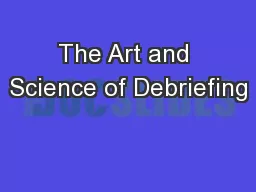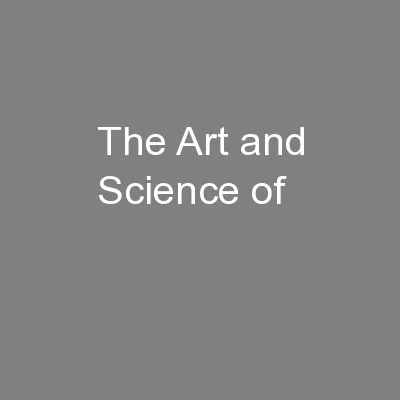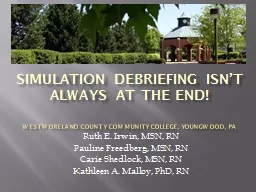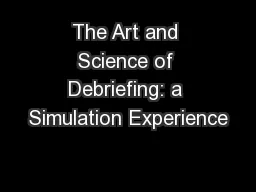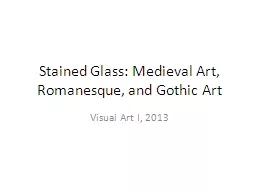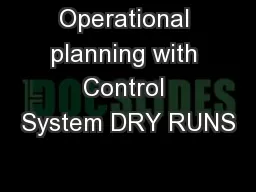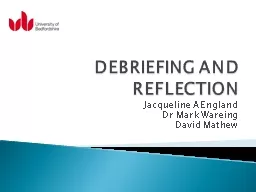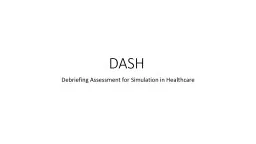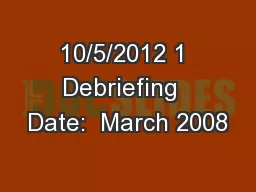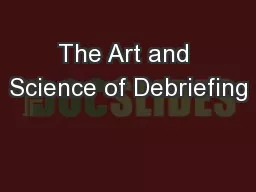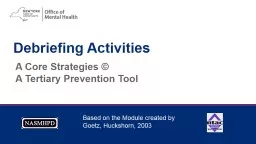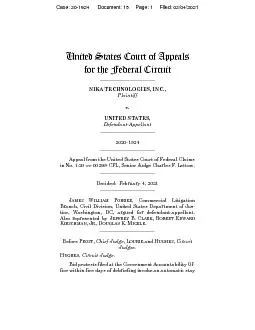PPT-The Art and Science of Debriefing
Author : natalia-silvester | Published Date : 2018-09-30
Sharon I Decker RN PhD ANEF FAAN Professor Director of Clinical Simulations Covenant Health System Endowed Chair in Simulation and Nursing Education The F Marie
Presentation Embed Code
Download Presentation
Download Presentation The PPT/PDF document "The Art and Science of Debriefing" is the property of its rightful owner. Permission is granted to download and print the materials on this website for personal, non-commercial use only, and to display it on your personal computer provided you do not modify the materials and that you retain all copyright notices contained in the materials. By downloading content from our website, you accept the terms of this agreement.
The Art and Science of Debriefing: Transcript
Download Rules Of Document
"The Art and Science of Debriefing"The content belongs to its owner. You may download and print it for personal use, without modification, and keep all copyright notices. By downloading, you agree to these terms.
Related Documents

